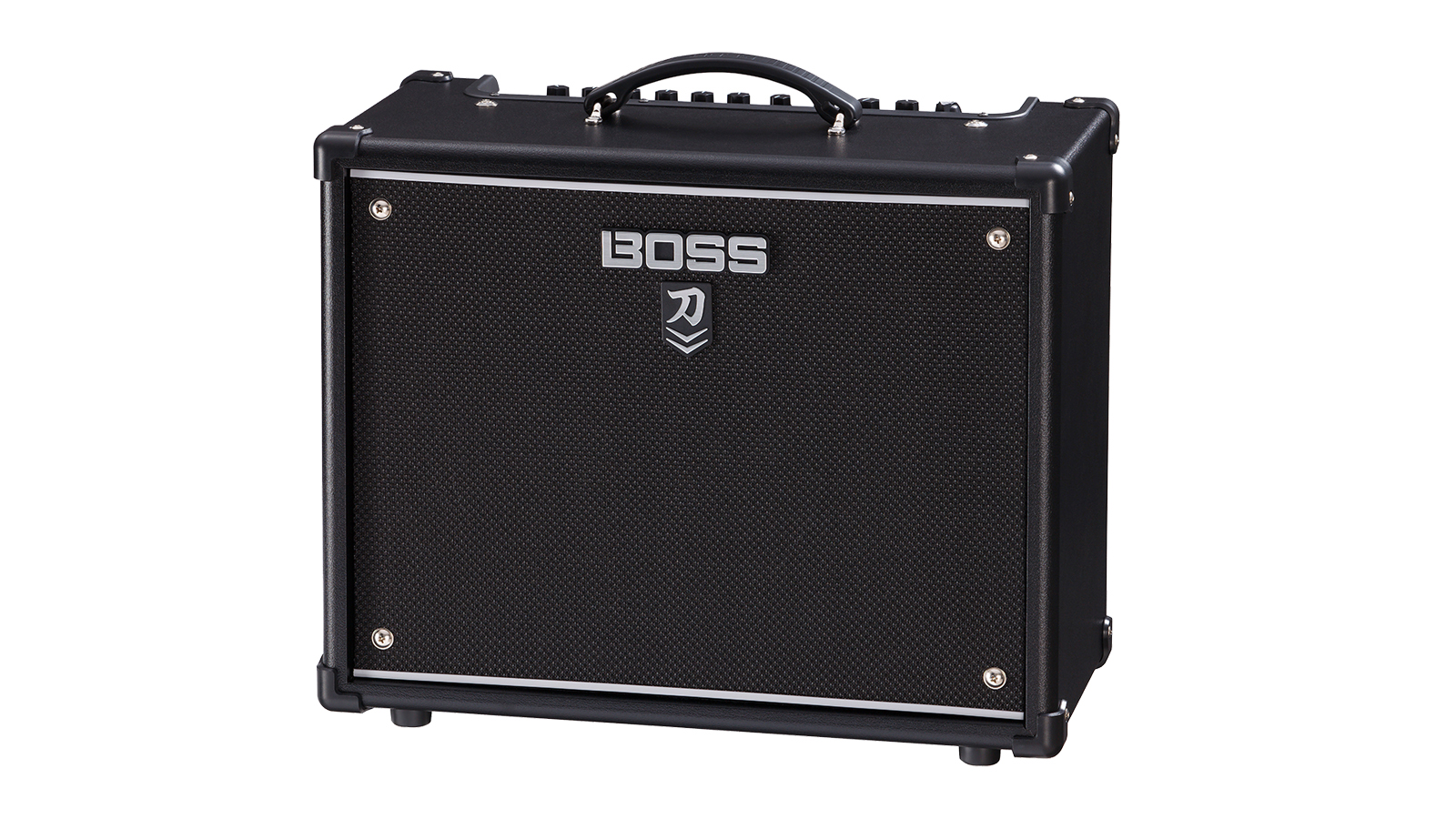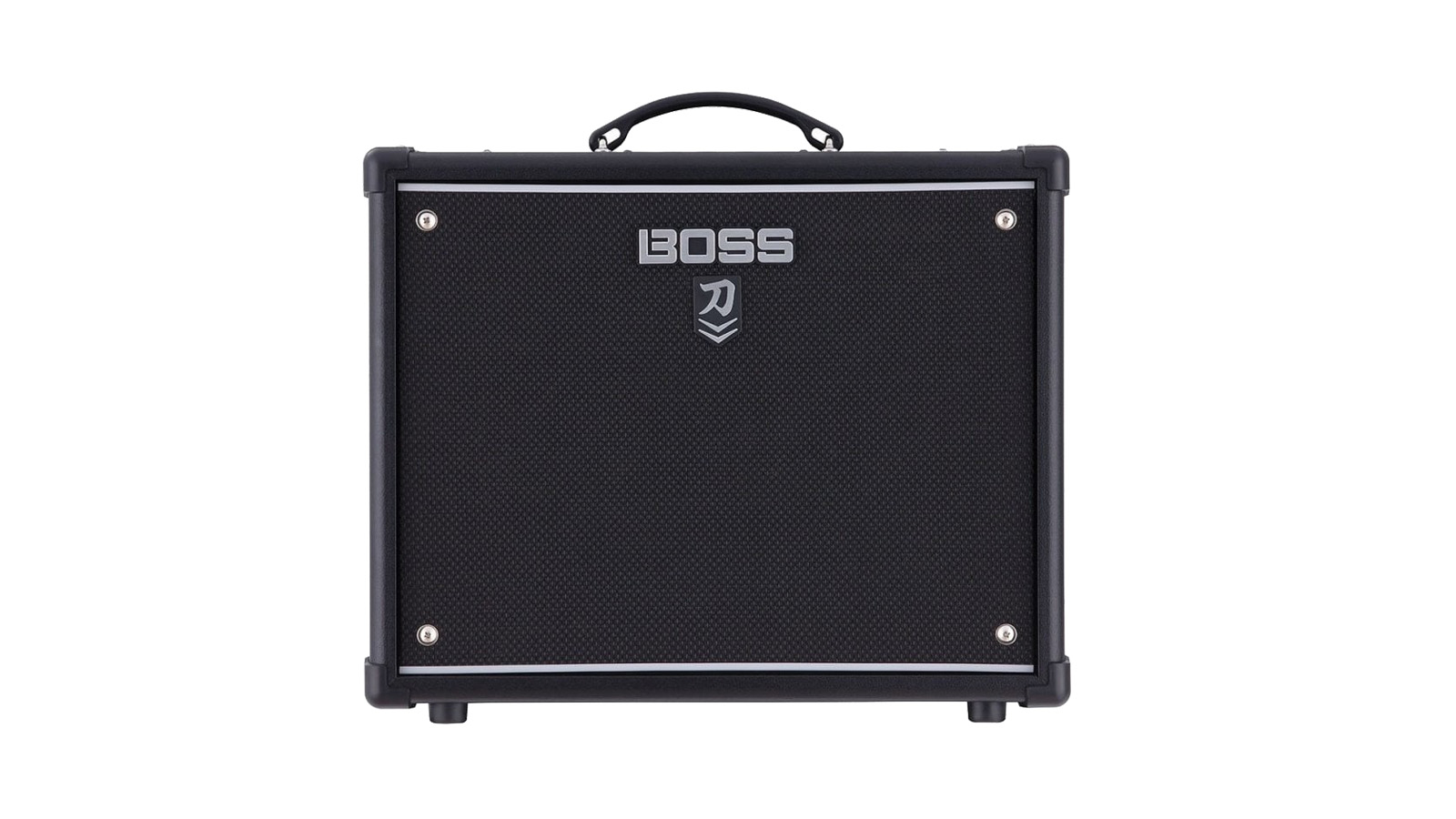Guitar World Verdict
This is a super versatile modelling amp, filled with quality amp tones and effects. It’s easy to use and it steers clear of most of the problems associated with digital amps.
Pros
- +
Great clean and distorted tones
- +
Versatile
- +
Easy to use
- +
Amazing value for money
- +
Up to 5 effects at once
- +
Power amp input
Cons
- -
Not quite loud enough for some gigs
- -
FX bypass buttons would have been nice
You can trust Guitar World
Building on the enormous success of its predecessor, the Boss Katana 50 MKII is a 50W modelling amp, packed with a wide range of high-quality sounds and effects, as well as super useful everyday features, like USB and headphone out for recording and silent practice, one-touch reset recall, power amp input for using with modellers and profilers, and loads more.
With its incredibly simple and easy to use interface and tube amp-like sound and response, it’s easy to see (and hear) why the Katana series has become known as one of the best modelling amps around.
The layout is very similar to the original Katana, however next to your amp types there’s a Variation button - this gives you two versions of each amp type, doubling the number of amp models from the original. Chances are, you’ll find which ones you like and stick with them, but having these extra options as a base for your tone is really useful.
Delving right into the cleans, the Katana 50 MKII dishes out a range of lush tones. We found that certain guitars suited having the variation switch on better than others, so it really is handy having those extra options. You can get that chimey, glassy Strat tone; warm, full bodied clean tones with humbuckers; and choppy, funky rhythm sounds, all by making simple tweaks to the control panel.

The booster section of the effects works really well with cleans too - it’s super easy to get that ‘tube amp on the edge of breakup’ sound. This crosses over nicely to the crunch setting, which, with the gain set low can do a similar sort of thing. Gradually increase the gain knob and you’re right into classic rock territory. It’s great how well the amp reacts to the guitar’s volume knob too - dialling back on this can clean an overdriven tone up nicely. With some modelling amps, the crunch and distorted tones are their weak points - this is not the case with the Katana.
Gradually increase the gain knob and you’re right into classic rock territory.
The Boss Katana 50 MKII has a good amount of low end too, so it’s sometimes easy to forget that you’re only playing through a 1x12” combo amp. The amp feels and responds really well too - is it exactly the same as playing through a tube amp? Probably not, but it isn’t far off, plus you’ve got a lot of extra versatility here.
It does high-gain tones very well, without ever sounding fizzy or harsh. There might not be quite enough gain on tap for super heavy metal or djent players, but classic metal and heavy rock players will have more than enough to play around with.
Like the old version, there is an acoustic setting too, so you can use acoustic electrics with this as well. The sound you’ll get will depend on your guitar’s pickup, but when we tried it, the Katana 50 MKII acted as a nice clean and neutral palette for the Taylor we plugged into it. It’s also really handy having the amazing effects section at your disposal for acoustic too.

You can now also use up to five effects simultaneously, giving you lots of scope to create some really cool sounds. The control panel has been cleverly designed, with two out of the three knobs acting as two in one - the lower part controls one effect, and the top part another so both can be controlled independently. It’s easy to dial in your desired sound - the only thing is you might struggle adjusting your settings on the fly at a gig. Also, once an effect is on, the only way to switch it off is to dial the knob anti-clockwise back to 0 - there’s no bypass switch. You can use an optional boss FS-6 footswitch alongside the Katana 50 MKII, though this will only let you switch between your preset banks.
You can even expand the effects section (and indeed delve deeper into what the Katana can do) by plugging the amp into your computer via the USB on the back and using the Boss Tone Studio Software.
The Boss Katana 50 MKII is pretty loud. You’d probably manage some smallish gigs with it, but if you’re looking for a guitar amp that’s primarily for live use, then maybe consider the 100W model; you’ll also get a little more clean headroom with that too.
This 50W model however is small enough to use as an incredible home practice amp, but puts out enough power to be able to use when jamming with other players. The power amp input on the back also means that if you have an unpowered Kemper, Axe FX etc, then you can use the Katana 50 MKII as a high quality speaker.

Boss Katana 50 MKII review: Conclusion
It’s difficult to find fault with the Boss Katana 50 MkII. The sound quality is great, and there’s a ton of options on board that will suit any style of player, plus it’s really easy to use. This isn’t an amp just for beginners or pros - it’s for everyone.
- Boss Katana vs Line 6 Catalyst: Which should you buy?
Boss Katana 50 MKII review: Specifications
- Watts: 50
- Type: Modeling
- Speakers: 1 x 12” Custom
- Channels: 10
- Effects: 15 ready to play effects (5 can be used at once - more effects in Boss Tone Studio)
- Contact: Boss
After spending a decade in music retail, I’m now a freelance writer for Guitar World, MusicRadar, Guitar Player and Reverb, specialising in electric and acoustic guitars, bass, and almost anything else you can make a tune with. When my head’s not buried in the best of modern and vintage gear, I run a small company helping musicians with songwriting, production and performance, and I play bass in an alt-rock band.












